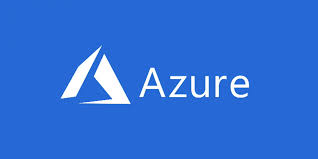Course information
Azure: Microsoft Azure, formerly known as Windows Azure, is Microsoft's public cloud computing platform. It provides a broad range of cloud services, including compute, analytics, storage and networking.
Today, cloud computing applications and platforms are rapidly growing across all industries, serving as the IT infrastructure that drives new digital businesses. These platforms and applications have revolutionized the ways in which businesses function, and have made processes easier. In fact, more than 77% business are today have at least some portion of their computing infrastructure in the cloud.
While there are many Cloud computing platform available, two platforms dominate the cloud computing industry. Amazon Web Services are the two giants in the world of cloud computing.
While AWS is the largest cloud computing platform, Microsoft Azure is the fastest-growing and second-largest.
Things that you should know about Azure:
- It was launched on February 1, 2010, significantly later than its main competitor, AWS.
- It’s free to start and follows a pay-per-use model, which means you pay only for the services you opt for.
- Interestingly, 80 percent of the Fortune 500 companies use Azure services for their cloud computing needs.
- Azure supports multiple Programming Language, including Java, Node Js, and C#.
Another benefit of Azure is the number of data centre’s it has around the world. There are 42 Azure data centres spread around the globe, which is the highest number of data centres’ for any cloud platform. Also, Azure is planning to get 12 more data centre’s, which will increase the number of
Azure Course Content
Introduction to Azure
• Cloud technology overview
• Overview of Azure
• Managing Azure with the Azure portal
• Managing Azure with Windows PowerShell
• Overview of Azure Resource Manager
• Azure management services
Managing Microsoft Azure
• Use the Azure portals
• Use Azure Resource Manager features via the Azure portal.
• Use Azure PowerShell
Implementing and managing Azure networking
• Overview of Azure networking
• Implementing and managing Azure virtual networks
• Configuring Azure virtual networks
• Configuring Azure virtual network connectivity
• Overview of Azure classic networking
Using a deployment template to implement Azure virtual networks
• Creating an Azure virtual network by using a deployment template
• Creating a virtual network by using PowerShell
• Configure virtual networks
Configuring connectivity between classic and Azure Resource Manager virtual networks
• Using a PowerShell script to connect a classic VNet and an Azure Resource Manager VNet
• Configuring a point-to-site VPN
• Validating virtual network connectivity
Implementing virtual machines
• Overview of Azure Resource Manager virtual machines
• Planning for Azure virtual machines
• Deploying Azure Resource Manager virtual machines
• Authoring Azure Resource Manager templates
• Overview of classic virtual machines
Creating Azure Resource Manager virtual machines in Azure
• Creating virtual machines by using the Azure portal and Azure PowerShell
• Validating virtual machine creation
Deploying Azure Resource Manager virtual machines by using Azure Resource Manager templates
• Using Visual Studio and an Azure Resource Manager template to deploy virtual machines
• Using Azure PowerShell and an Azure Resource Manager template to deploy virtual machines
Managing Azure virtual machines
• Configuring virtual machines
• Configuring virtual machine disks
• Managing and monitoring Azure virtual machines
• Managing classic virtual machines
• Configuring availability
• Implementing desired state configuration (DSC)
• Implementing storage space–based volumes
Planning and implementing storage, backup, and recovery services
• Planning storage
• Implementing and managing storage
• Implementing Azure Content Delivery Networks
• Implementing Azure Backup
• Planning for and implementing Azure Site Recovery
• Creating and configuring Azure storage
• Using Azure file storage
• Protecting data with Microsoft Azure Backup
Azure Sql databases
• Introduction to Azure SQL databases
• Configuring SQL Database server
• Creating SQL databases
• Connecting to SQL Databases from Sql Server Management studio
Course information
- Course: Azure
- Company: ArchiTech IT
- Course Content: Available
- Course Duration: 40-45 Days
- Session Recording: Lifetime Access
 ArchiTech IT
ArchiTech IT